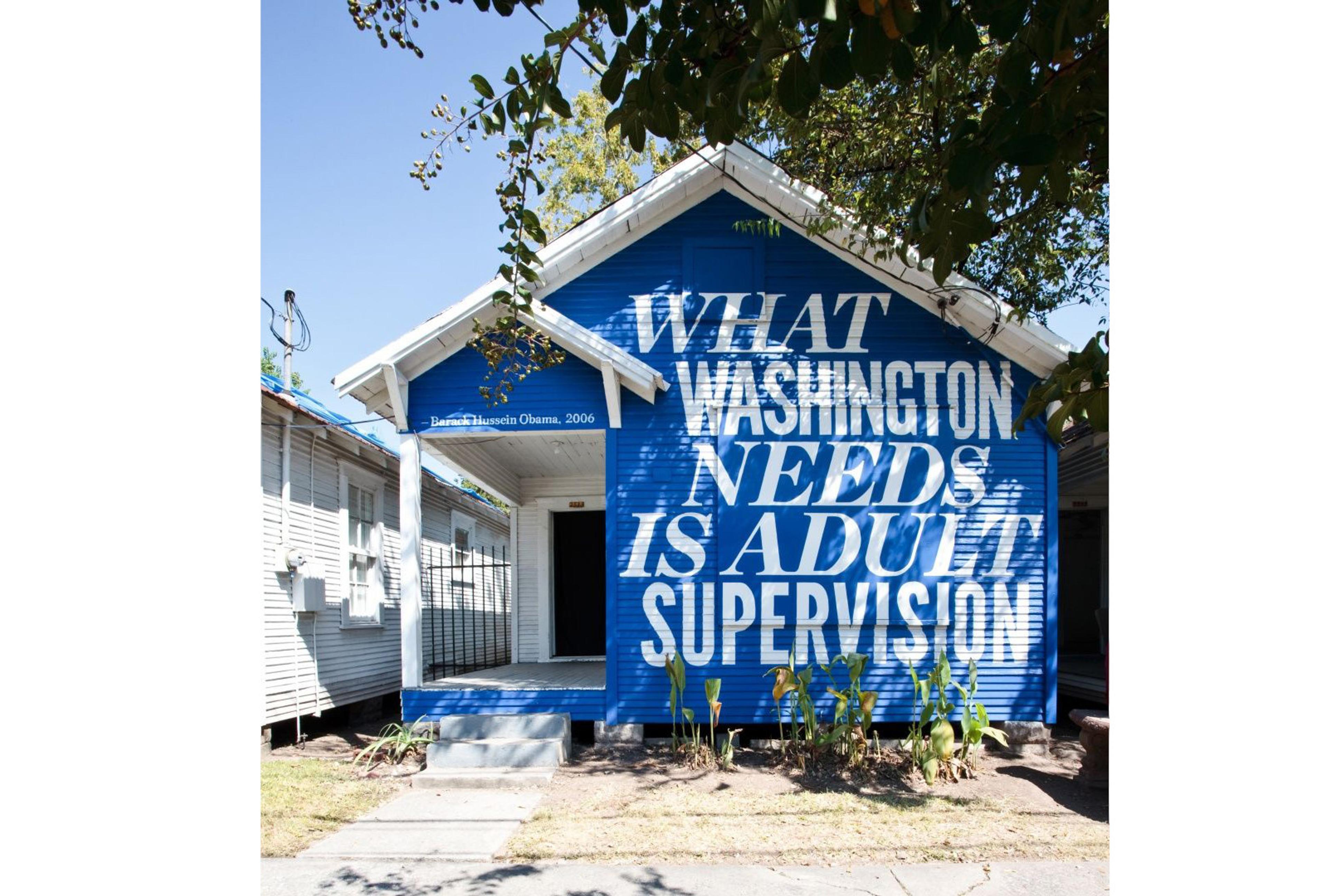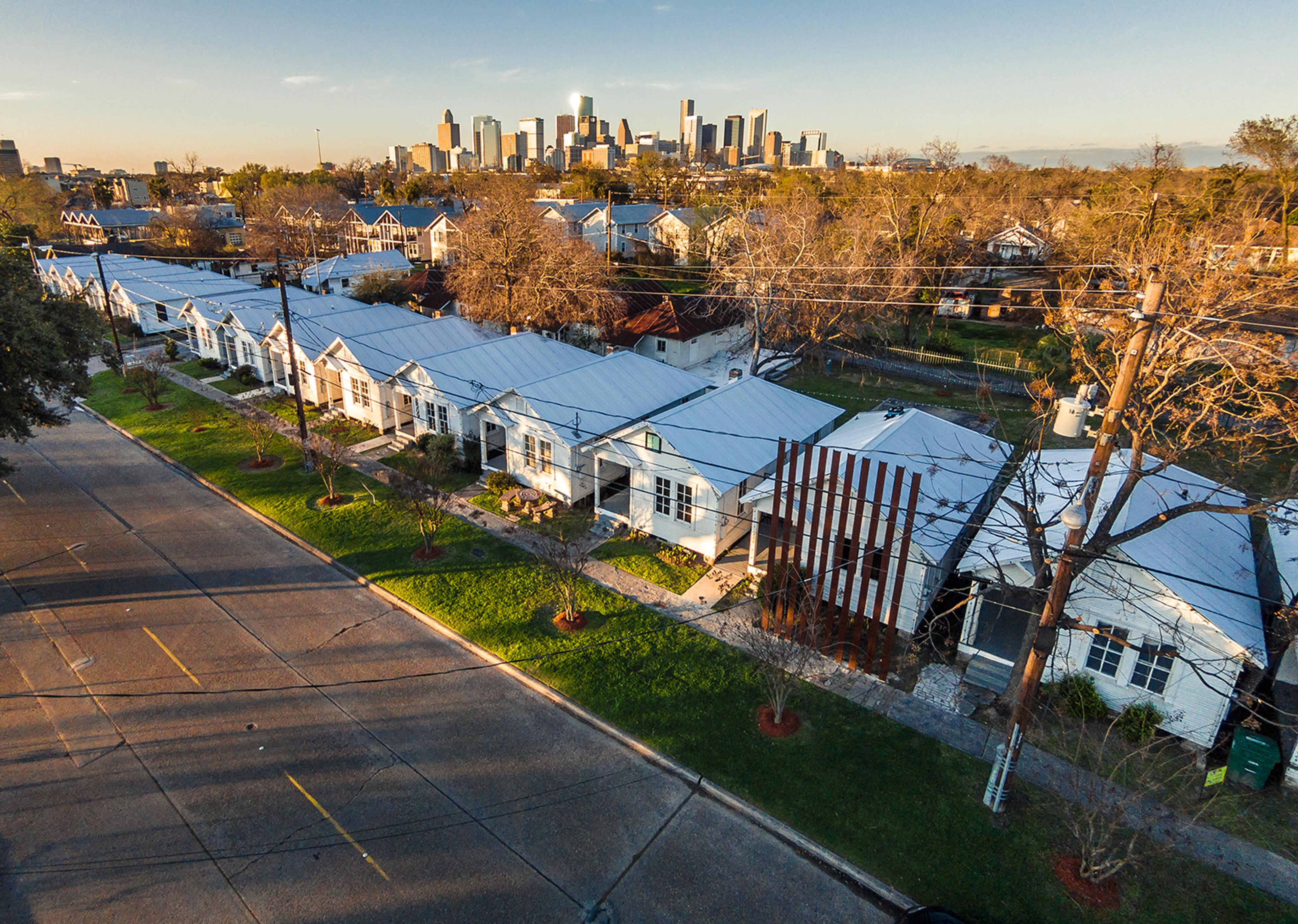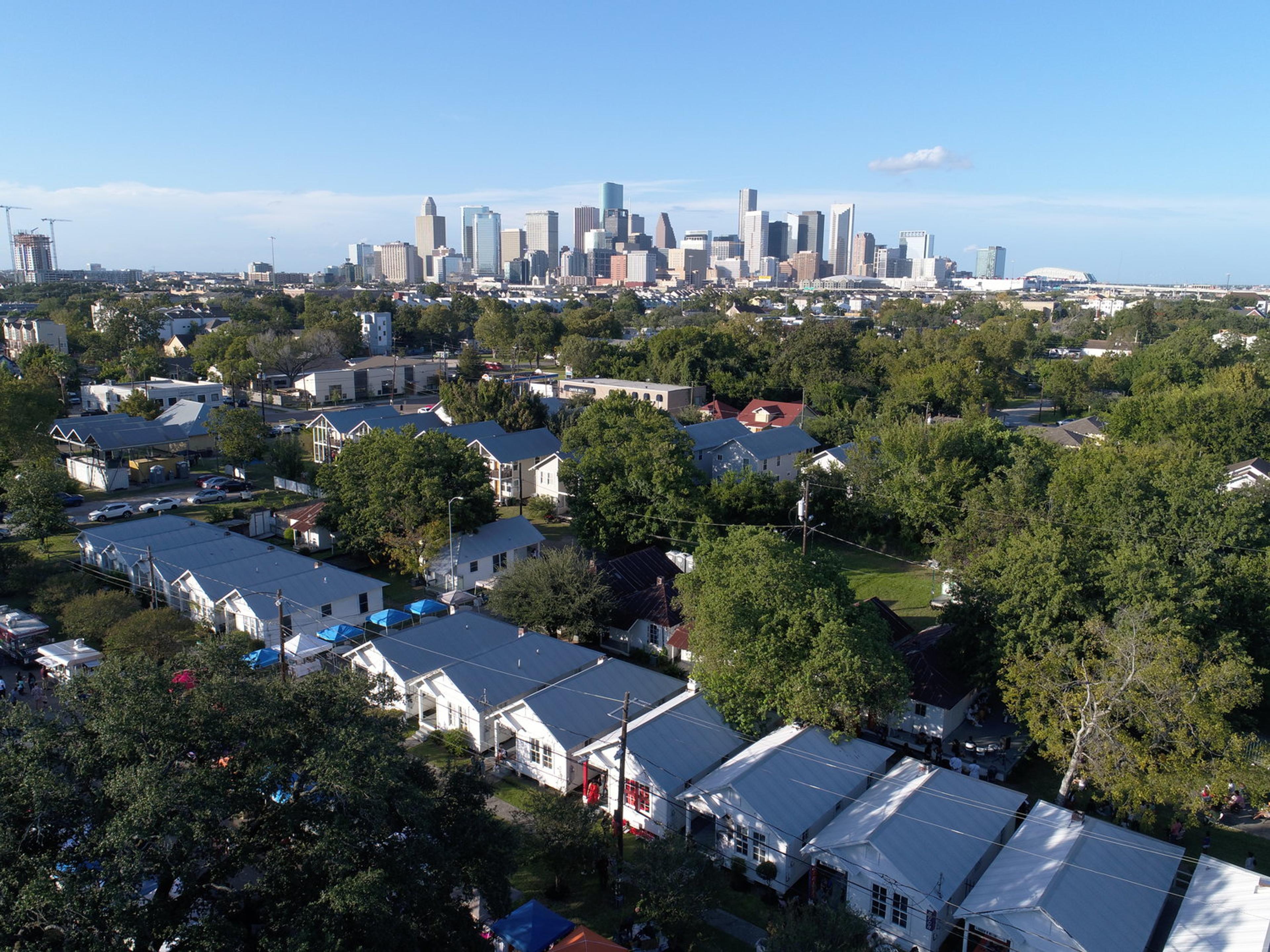Project Row Houses, 1993-2018, Houston (Texas)
Project Row Houses’ work with the Third Ward community began in 1993 when seven visionary African-American artists—James Bettison (1958-1997), Bert Long, Jr. (1940-2013), Jesse Lott, Rick Lowe, Floyd Newsum, Bert Samples, and George Smith—recognized real potential in a block and a half of derelict shotgun houses at the corner of Holman and Live Oak. Where others saw poverty, these artists saw a future site for positive, creative, and transformative experiences in the Third Ward. Together they began to explore how they could be a resource to the community and how art could be an engine for social transformation. This is how the PRH story began.
As the founders engaged with a community of creative thinkers and the neighbors around them, Project Row Houses quickly began to shift the understanding of art from traditional studio practice to a more conceptual base of transforming the social environment. While they were artists, they were also advocates.
Over the next thirty years the organization has brought together groups and pooled resources to materialize sustainable opportunities for artists, young mothers, small businesses, and Third Ward Residents helping to cultivate independent change agents by supporting people and their ideas so that they have tools and capacity to do the same for others.
PRH is, and has always been, a unique experiment in activating the intersections between art, enrichment, and preservation.
PRH was inspired in part by Joseph Beuys, a German artist who coined the term Social Sculpture to represent the way in which people shape the world around them, and Dr. John Biggers, a Houston-based artist and educator whose work challenged African American stereotypes and often highlighted architecture and its significance to community.
Early conversations between Dr. Biggers and PRH founder Rick Lowe about the rich history and symbolism of the shotgun houses that dot the physical landscape of Third Ward informed and shaped the ideals of Project Row Houses. It was a style that originated in West Africa and was brought to the US via the slave trade – first through the Caribbean up to New Orleans and then across the country.
Mindful of the history and depth of symbolism in these houses, the founders began to brainstorm what a project would look like if it encompassed 22 houses.
[Read more about Project Row Houses]
Greenwood Art Project, 2020-ongoing, Tulsa (Oklahoma)
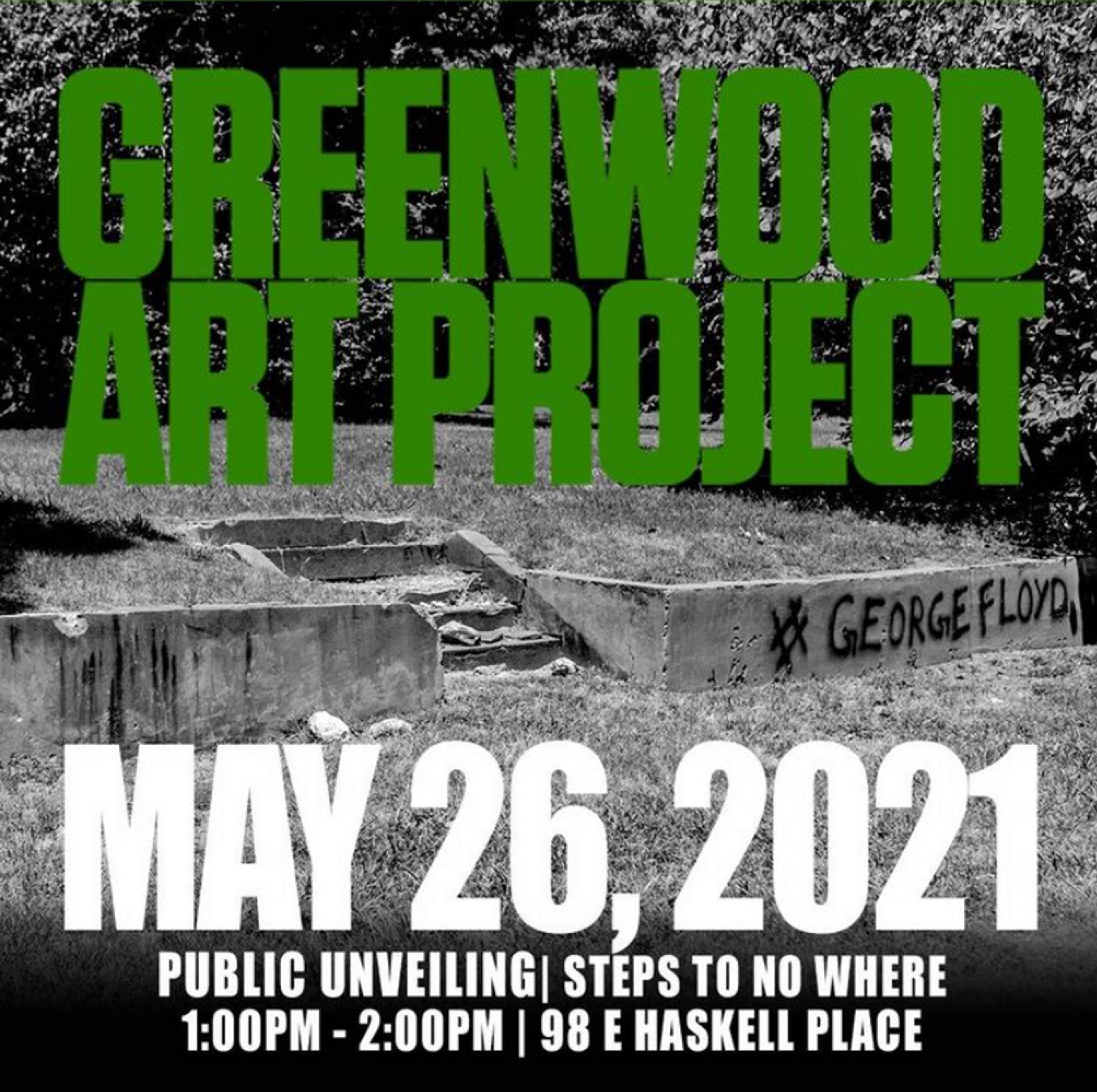

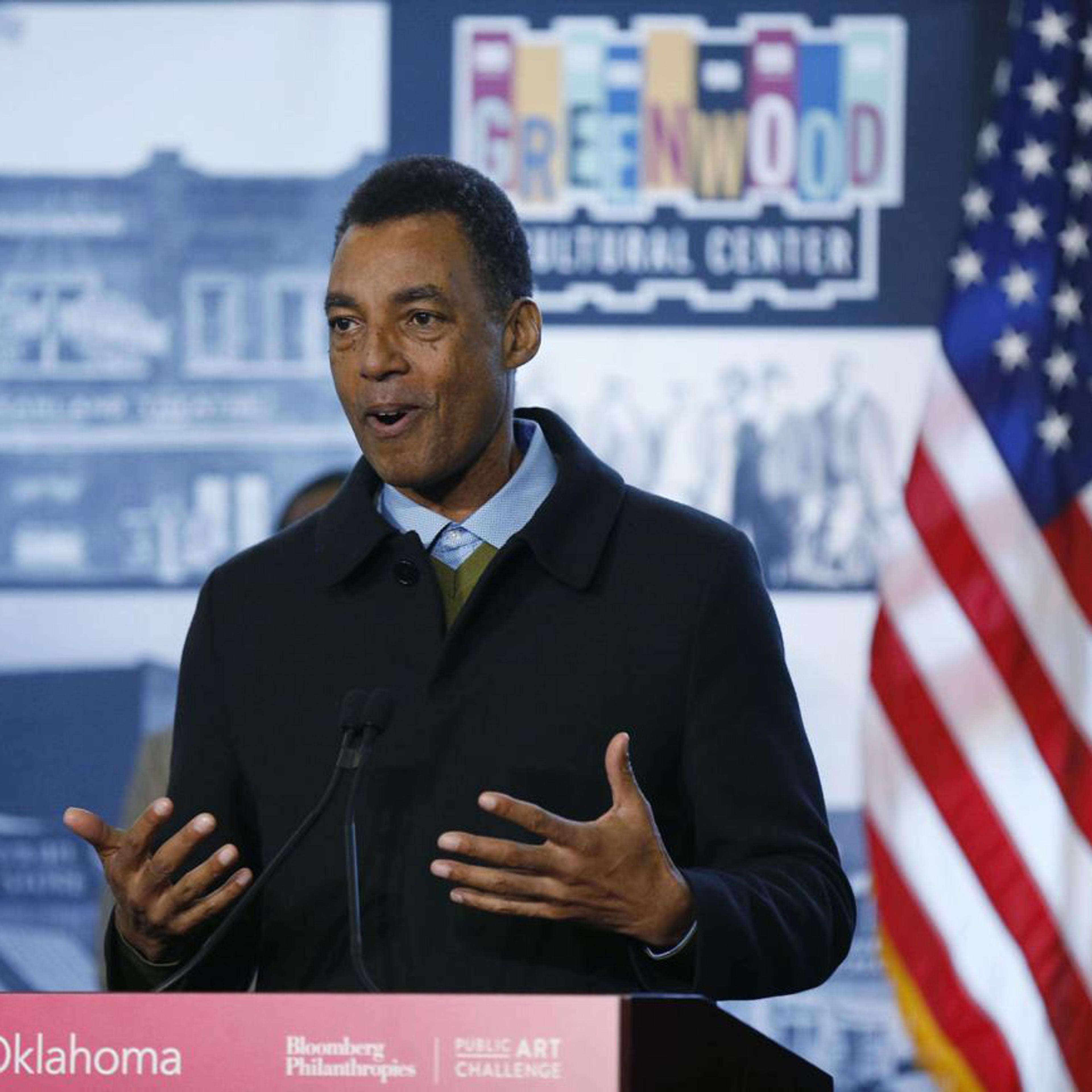
Starting on June 1, 1921, in the Greenwood neighborhood of Tulsa, Oklahoma, nearly 300 African Americans lost their lives in a matter of days. Forty square blocks of homes, hospitals, schools, and churches were looted and burned to the ground, leaving nearly 9,000 homeless. The area, which was once the home of hundreds of bustling African American businesses and popularly known as Black Wall Street, had been completely wiped out.
Unfortunately, this racially motivated destruction of a once-flourishing community has been largely forgotten in our national consciousness. However, as the centennial approached, the City of Tulsa launched a new project that seeks to raise awareness of the historic massacre and celebrate its historically significant Greenwood neighborhood.
Through “The Greenwood Art Project,” MacArthur Fellow Rick Lowe worked alongside local artists to bring the story of Black Wall Street to light. In creating a series of art installations located at significant sites throughout the historic district, Lowe and his team tell a story of vulnerability and resilience.
Lead Artists: William Cordova, Rick Lowe
Program Director: Jerica Wortham
Social Media Archivist + Anthropologist: Marlon Hall
Project Coordinator: Jeff Van Hanken
Deputy Chief of Community Development & Policy/City of Tulsa: Ashley Philippsen
This project is supported by Bloomberg Philantropies.
Transforma Projects, 2005-2010, New Orleans (Louisiana)
Transforma is a collective of artists and creative professionals formed in the aftermath of Hurricane Katrina to support and celebrate cultural practices that impact the social and physical environment. The initiative sought to expand opportunities for artists to use their creativity in the rebuilding of New Orleans by exploring the relationship between art making and issues such as education, health, the environment, and community development. Founders of Transforma and members of its volunteer-based national resource team, came together following the destruction of Hurricane Katrina to consider how experience, resources, and networks could supplement and enhance the social and physical recovery of New Orleans. After a few conversations, the initiative was born and the name Transforma followed.
As practitioners within the field, they had seen art and culture become increasingly commercialized, limiting the opportunities for artists to work in public or socially engaged practices. To counter this trend, Transforma strategically supported such practices with direct financial assistance, technical assistance, and networking opportunities. Generally it encouraged a greater emphasis on the role of artists, the arts, and culture in addressing the social and political needs that confront our society. Project members include: Jessica Cusick, Sam Durant, Jess Garz, Rick Lowe, and Robert Ruello.
[Read more about Transforma Projects]
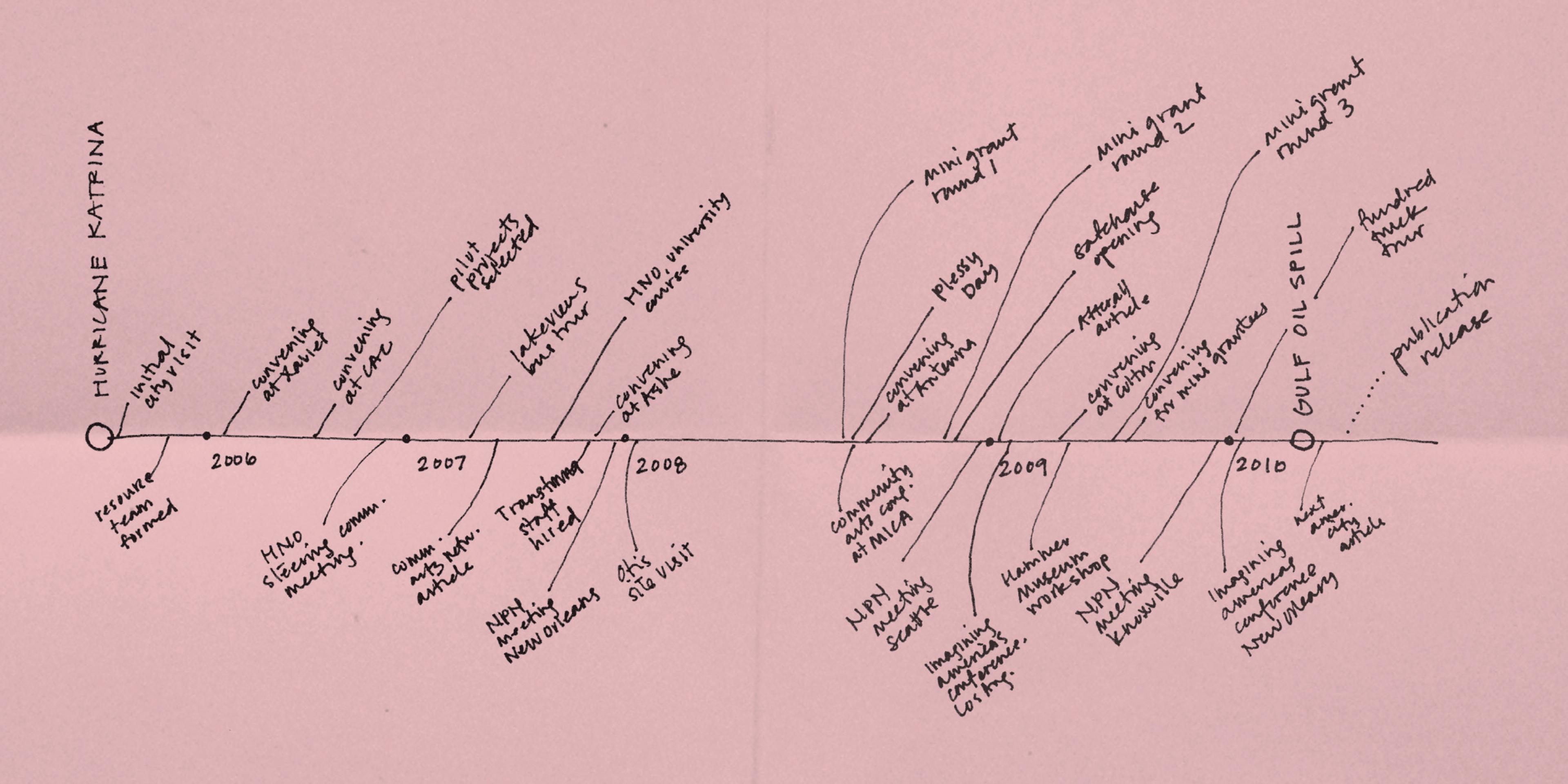
Nasher XChange: Trans.lation, 2013-2014, Vickery Meadow (Texas)
A community art project that connected the residents of Dallas’ most diverse neighborhood, Vickery Meadow, with one another and the city at large.
The work of Houston-based artist Rick Lowe tempted viewers to question where process ends and product begins, what is “art” and what is community activism. With roots in the philosophy of Joseph Beuys, most notably the idea of “social sculpture,” Lowe professed that a large part of his work included “introducing poetic moments into mundane activities.” Like Beuys, who proposed an enlarged definition of art that could include every conscious act, Lowe worked toward a social system in which every person is a creator.
Rick Lowe’s Nasher XChange project took place in the Vickery Meadow neighborhood, a three-square-mile area that makes up one of the most culturally diverse sections of Dallas. Dubbed Dallas’ own “United Nations,” Vickery Meadow is home to 30,000 residents speaking as many as 27 languages from countries in Africa, Asia, the Middle East and Latin America. The project, entitled Trans.lation, facilitated a new vision of what public space and interaction can look like in Vickery Meadow.
Lowe considered the process by which he connects with and learns about a community to be an integral part of his art. He held numerous community meetings with residents and property owners, who shared an overwhelming desire to feel more connected to one another and to the city outside of Vickery Meadow. Working with an eclectic group of artists, community organizers, designers, and residents to highlight and translate the cultural diversity of Vickery Meadow into an asset, Lowe and the Trans.lation team identified residents’ creative strengths and connected them with local artists for collaboration and mentorship to ultimately engender opportunity and entrepreneurship.
Trans.lation culminated in a series of Pop-up Markets open to the public on October 19, November 23, December 21, January 18, and February 22 which enabled the Vickery Meadow community to share their artistic talents and cultural traditions with one another and the greater Dallas community. [Read more about Trans.lation (Dallas News)]
Victoria Square Project, 2017-2023, Athens (Greece)
Located in the Athenian neighborhood of Kypseli, Victoria Square became symbolic of the immigrant and refugee challenges facing Athens. In 2015, when many made their way to Europe through Athens and Greece, the square became a campground for refugees. As an urban symbol of "the problem with refugees", Victoria Square offered a perfect creative platform for catalyzing cultural exchange within a diverse community, raising the estimation of the value that refugees and immigrants can bring to the community. The vision of the Victoria Square Project was to establish a concentrated moment of cultural exchange during the timeframe of documenta 14 in Athens and beyond, while organizing the community and municipality to leverage this moment to further give shape and cultural vibrancy to one of Athens's most diverse neighborhoods. The project acts as a catalyst for establishing a deeper appreciation for the diverse cultures among the Greek population. With support from a number of different sources, Victoria Square Project built a community among residents, business owners, and organizations in the Victoria Square neighborhood.
